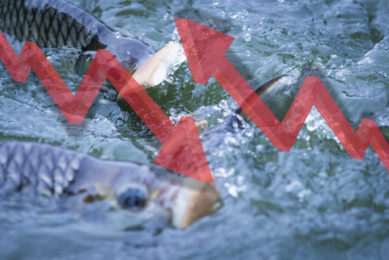Feather meal: A useful addition to fish feed
![[Photo: iStock]](https://www.allaboutfeed.net/app/uploads/2020/12/002_409_rb-image-2721828.jpeg)
Feather meal is a highly valuable protein source for aquaculture feeds and has demonstrated excellent performance in academic and commercial-scale trials at high inclusion levels. Here we describe some of these trials and their outcomes.
Mainly in salmonid feeds in North and South Americas, feather meal has been used for many years now and at increasing levels in recent years. Unfortunately, in other countries, feeds are routinely formulated to contain below 7% of feather meal and in some countries, the use of feather meal is even excluded. The hesitance to use feather meal is due to the believe that feather meal is poorly digestible and its smell could influence the feed intake when administered at high levels. However, the interest is growing to start using it, as many studies show that feather meal gives significant opportunities to improve the cost-effectiveness of fish feeds without losing fish performance. At the same time, clear improvements have been made to reduce the variability in the quality and nutritive value of this product.
Raw materials and processing
The composition and freshness of the raw materials as well as the cooking and drying conditions can have significant effects on the nutritional quality of feather meal, mainly on the digestibility of protein and amino acids. Therefore, a strict control on the raw materials, consisting of chicken and partly turkey feathers, is required. Although crude feather meal contains a high percentage of protein, it mainly exists of keratin that is unavailable for fish. Raw feathers contain mainly keratins that contain disulfide bounds that without processing are unavailable for fish and other animals. Steam together with pressure can break the disulfide bonds whereby the protein and amino acids become available. A fine balance between sufficient hydrolysis and over-processing makes feather meal more or less digestible. Therefore significant differences in apparent digestibility of protein have been observed among feather meals from various origins. Apparent digestibility coefficients for protein of the four feather meals varied between 81 and 87%, comparable to those of standard fish meal, whereby the differences are related to processing conditions.
Underestimated amino acid profile
Feather meal is very high in crude protein and its amino acid profile is quite similar to that of fish meal, whereby some essential amino acids even exceed those in fish meal. A deficiency is only given in Methionine, Lysine and Histidine, whereby Cysteine can partly replace Methionine. Lysine and Histidine could be balanced by using other types of processed animal proteins such as blood meal, rich in both amino acids. Formulation of fish feed is about balancing nutrients, more than applying a minimum and maximum constraints of raw materials. Therefore, since the amino acid composition of different rendered animal proteins appears to be complementary, feeds can be formulated to contain higher levels of rendered animal protein ingredients if these were used in combination instead of as a sole ingredient to achieve an optimum amino acid balance.
Performance trials in fish
The effect of high inclusion levels (10 and 30%) of a high-quality feather meal on the apparent digestibility of the macronutrients and energy content of the diets were determined in gilthead seabream (Sparus aurata). Therefore, three isolipidic and isoenergetic diets were formulated taking into account all the nutritional requirements of seabream, whereby feather meal was included at 10% and 30% at the expense of fish meal. The experimental diets were applied in triplicate and compared with a control diet containing almost 50% of fish meal. Results (Figure 1) demonstrate that feather meal up to 30% of inclusion level generates a high digestibility of all nutrients tested, comparable to LT fish meal (67% protein). Besides being a substitute for fish meal, feather meal can also complement other by products in the feed matrix. In rainbow trout (Oncorhynchus mykiss) feather meal was evaluated at 17% inclusion level, not individually but together with animal protein such as poultry by-product meal at 16% inclusion level, without supplementation of essential amino acids. Results (Figure 2) show that feather meal has a good nutritive value for trout and in combination with poultry by-product meal, fish meal can be substituted without losing growth performance, feed intake nor feed efficiency. In a second trial, three feather meals from different origins and with protein levels varying from 74% till 83% crude protein were used in a 20-week trial with Rainbow trout reared at 8.5ºC. The incorporation of up to 15% feather meal (depending on the origin) in the diet was possible without affecting growth, feed efficiency, nitrogen or energy gains of the fish (Figure 3). The decrease in growth performance and feed efficiency of the fish fed the diet with 20% feather meal may be attributable to a deficiency in lysine or other amino acids that were not compensated in the experimental diets.
Conclusions
Feather meals are ingredients of high nutritive value when processed in an adequate way and simple ‘fine-tuning’ of the diet formulation may be all that is needed to allow feed manufacturers to use a high level of this ingredient in fish and shrimp feeds. It has been shown that the digestibility of feather meal is comparable to that of fish meal in gilthead seabream and feather meals of comparable quality have more than 81% of protein digestibility in trout and can be included up to 17% in the diets without losing performance.
References are available on request.











